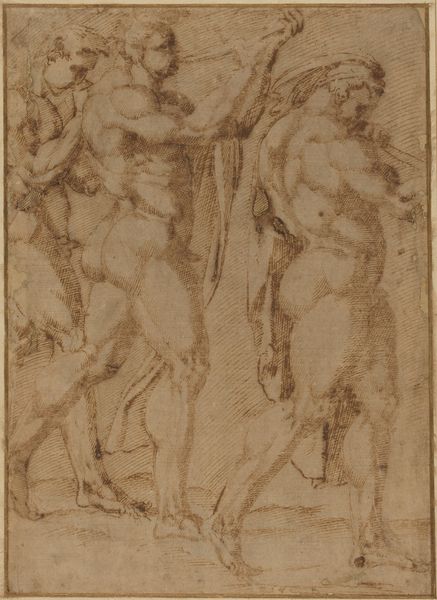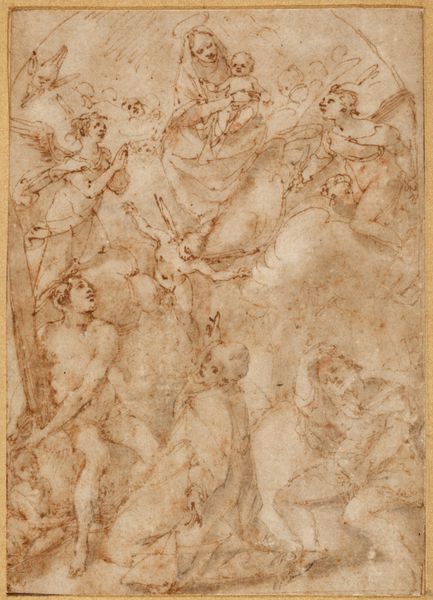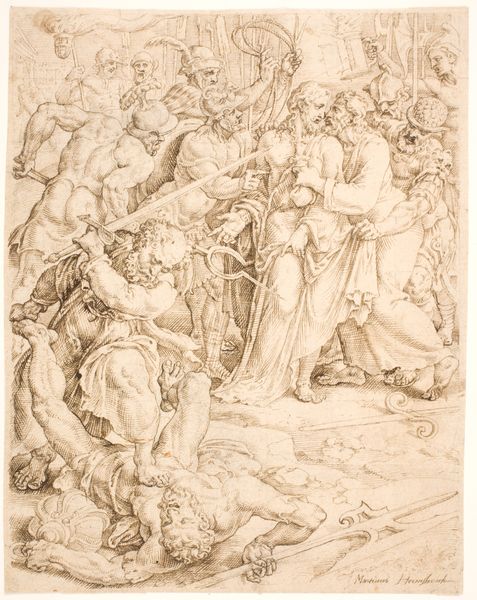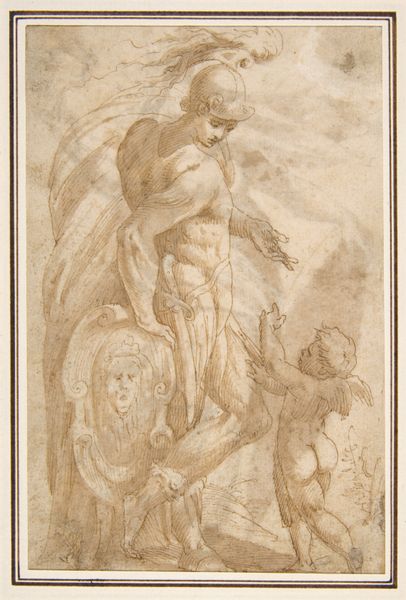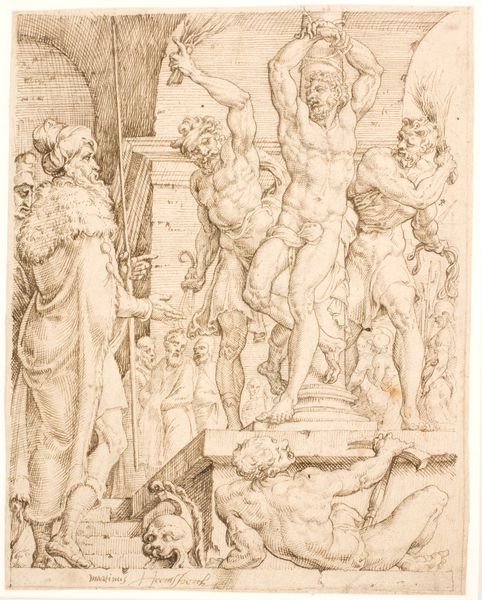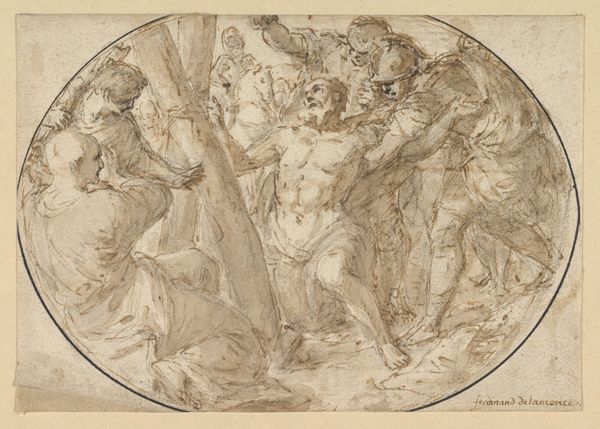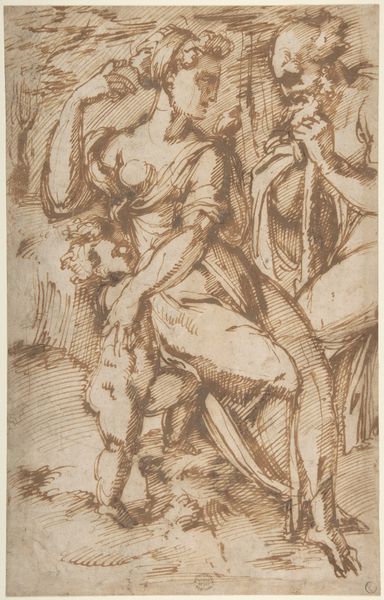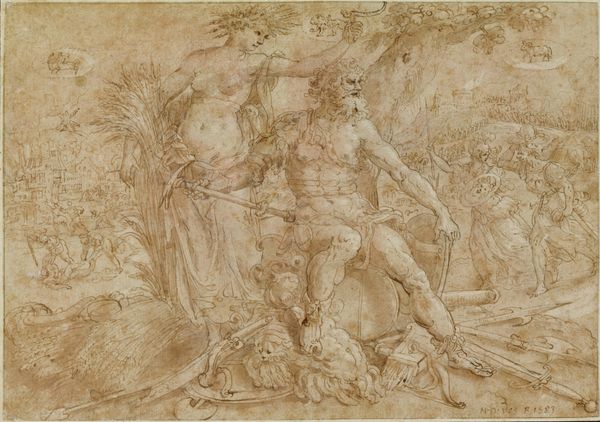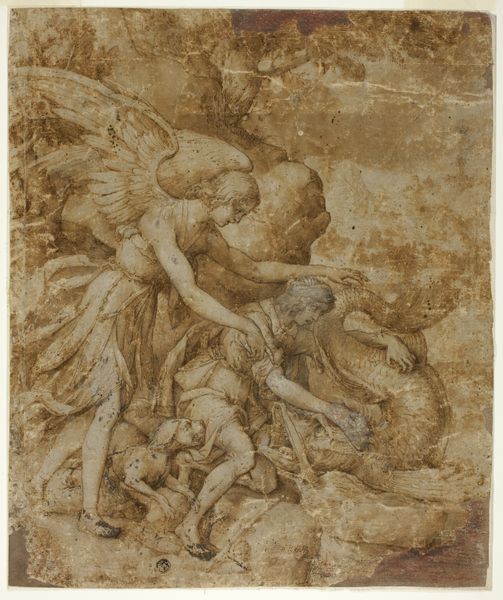
drawing, ink, charcoal
#
portrait
#
drawing
#
high-renaissance
#
charcoal drawing
#
figuration
#
ink
#
charcoal
Copyright: Public Domain
Baccio Bandinelli rendered this study of male figures with pen and brown ink in the 16th century. Note the emphasis on the nude male form, a symbol of power and virility deeply rooted in classical antiquity. These muscular figures, with their exaggerated anatomy and dynamic poses, reflect a fascination with the heroic male nude, echoing the sculptures of ancient Greece and Rome. We see it, too, in the Renaissance, with Michelangelo's David, a symbol of Florentine civic pride and strength, and the Hellenistic sculpture of Laocoön and His Sons. Consider how this motif of male strength recurs and mutates across history. From the gods and heroes of ancient mythology to the athletic ideal of the Renaissance, each epoch imbues this symbol with its own cultural and psychological significance. This symbol has an emotional and psychological resonance, engaging viewers on a deep, subconscious level. The enduring fascination with the male form speaks to the cyclical nature of cultural memory, where symbols resurface, evolve, and take on new meanings in different contexts.
Comments
No comments
Be the first to comment and join the conversation on the ultimate creative platform.

